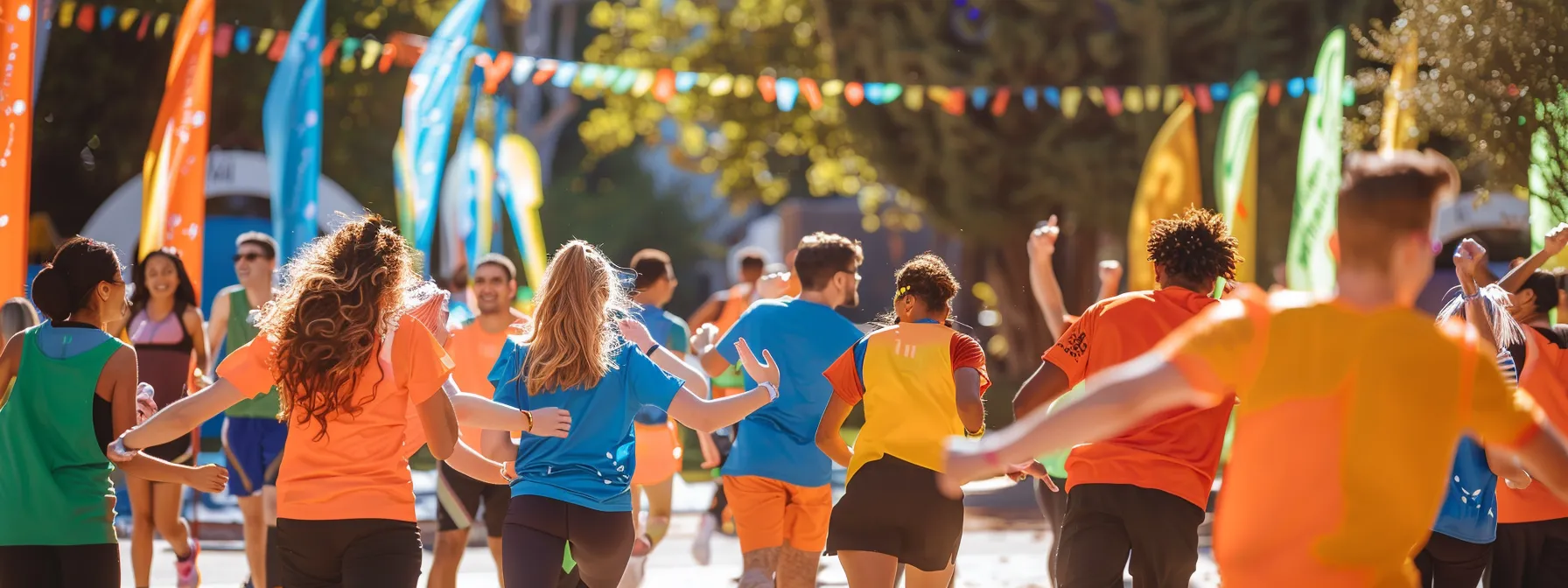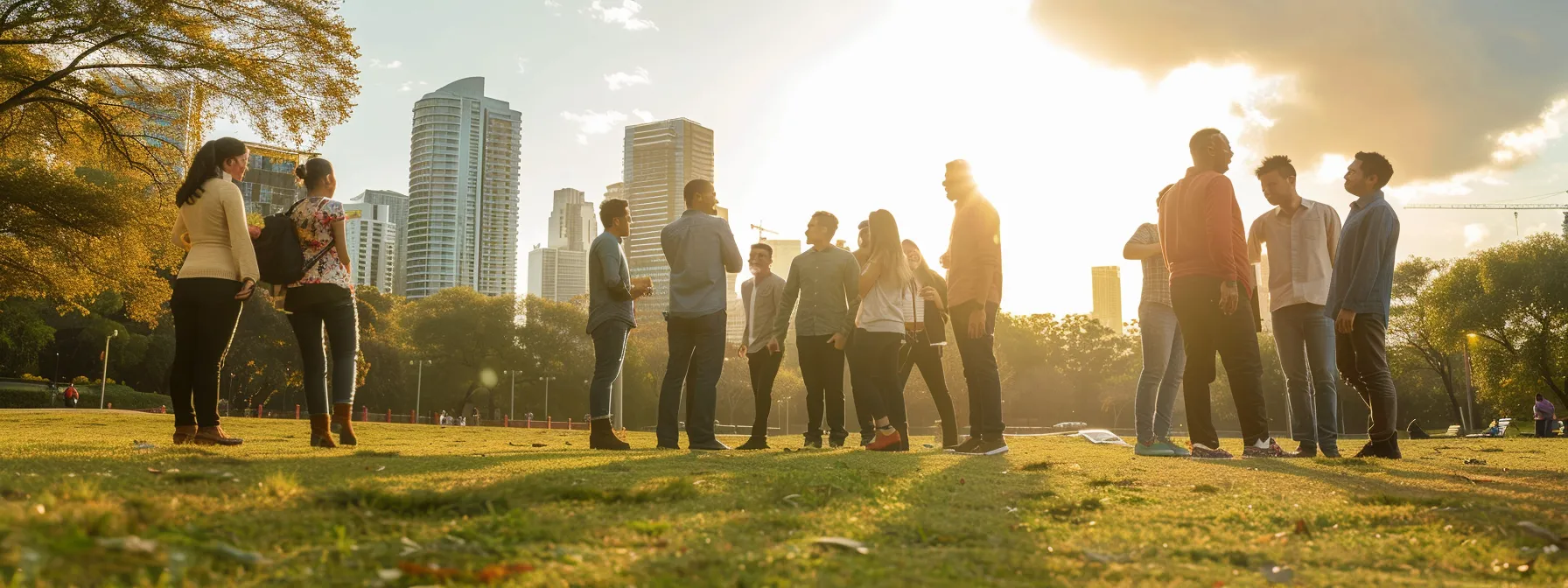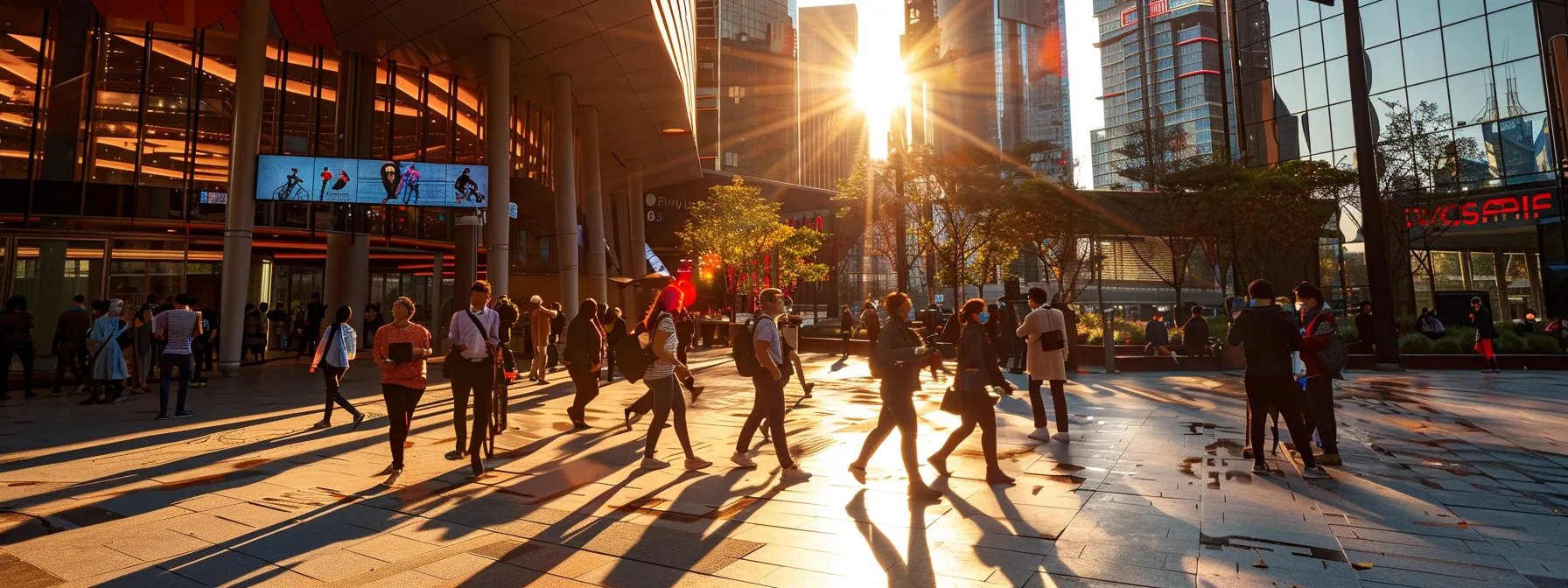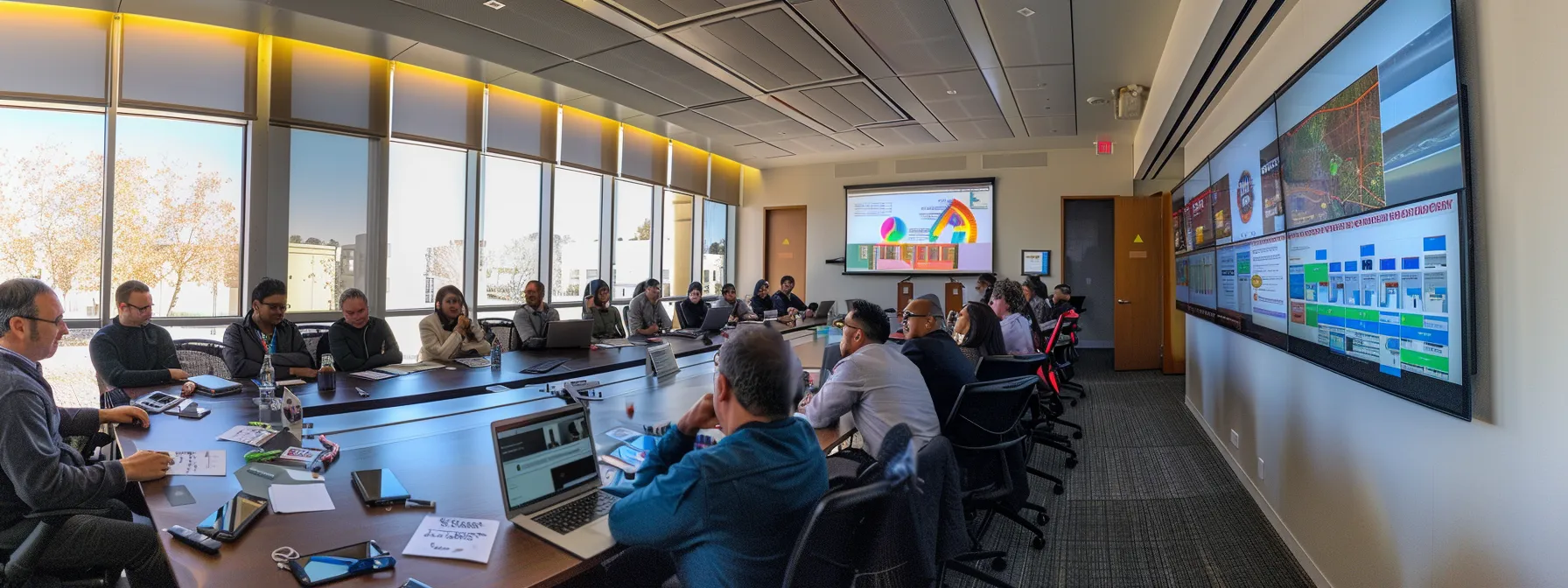Dynamic Outdoor Scavenger Hunts for Effective Teams

Outdoor Scavenger Hunts for Effective Team Building
Are traditional team-building exercises falling flat for your corporate team? Outdoor scavenger hunts offer a dynamic solution to enhance teamwork and communication. This blog post will explore why these activities are effective, how to plan an engaging hunt, and innovative challenge ideas that can energize your team. Readers will uncover valuable insights into selecting the right location and measuring the success of their event. By the end, companies will have the tools to address common team bonding issues, fostering a more cohesive and motivated workforce through this unique approach to team building.
Why Outdoor Scavenger Hunts Foster Stronger Teams

Outdoor scavenger hunts offer a unique opportunity to shift away from the traditional workplace environment, promoting genuine connections among team members. These activities foster collaboration through shared challenges, enhance communication skills in dynamic settings, and build problem-solving abilities together outdoors, all while boosting morale with fun corporate events filled with energy and excitement, akin to a relay race.
Moving Beyond the Office for Genuine Connection
Stepping away from the conventional office setting allows team members to connect on a personal level, fostering a collaborative spirit that can be hard to achieve in a virtual team environment. Engaging in activities such as beach volleyball during outdoor scavenger hunts promotes physical activity, which positively affects mood and encourages camaraderie. These experiences not only contribute to team unity but also align with corporate social responsibility by supporting local communities through outdoor engagement.
Encouraging Collaboration Through Shared Challenges
Outdoor scavenger hunts effectively encourage collaboration through interactive challenges that require teamwork, such as jenga and capture the flag. These activities place teams on various trails where they must devise strategies, communicate openly, and support one another, significantly boosting morale as they tackle obstacles together. Incorporating elements like meditation stations along the route provides moments for reflection, further enhancing team dynamics by fostering a sense of unity and shared purpose.
Improving Communication Skills in a Dynamic Setting
Outdoor scavenger hunts significantly enhance communication skills in a dynamic setting by placing teams in engaging, real-world situations. Activities like frisbee throws or navigating a zip line require participants to express their thoughts clearly and collaborate effectively to achieve common goals. With the guidance of a facilitator, team members can practice their teamwork abilities, building confidence in their interactions and reducing the reliance on virtual reality communication, which often lacks the nuances of face-to-face dialogue.
Building Problem Solving Abilities Together Outdoors
Outdoor scavenger hunts present an excellent platform for enhancing problem-solving abilities within teams. Activities such as building a soap box derby car or organizing a potluck challenge require participants to think critically while promoting leadership and collaboration. These hands-on experiences enable teams to tackle real-world problems together, fostering sportsmanship and a spirit of cooperation that translates back to the workplace, ultimately strengthening the team’s capacity to overcome challenges.
Boosting Morale With Fun Corporate Outdoor Team Building Events
Engaging in fun corporate outdoor team building events like storytelling sessions combined with activities such as rope challenges and axe throwing can significantly boost team morale. These interactive experiences foster an environment of creativity and collaboration, allowing employees to craft memorable moments together. By incorporating elements of sustainability into these activities, teams not only bond over shared goals but also contribute positively to their community, enhancing their overall sense of purpose and connection.
Planning Your Corporate Outdoor Scavenger Hunt Adventure

Effective planning is vital for a successful corporate outdoor scavenger hunt. First, defining clear objectives for team development ensures the activities meet specific goals. Next, selecting a theme that aligns with company culture enhances participant engagement. Crafting engaging clues and tasks fosters teamwork, while mapping out the route and boundaries keeps the event organized. Lastly, allocating roles and responsibilities promotes smooth execution and utilizes diverse skills, including survival skills and interactive tasks like disc golf.
Defining Clear Objectives for Team Development
Defining clear objectives for team development is essential when planning a corporate outdoor scavenger hunt. By focusing on specific skills such as communication, collaboration, and problem-solving, organizers can create a structured experience that boosts team dynamics. For example, integrating activities like an obstacle course or a shark tank challenge can enhance engagement while directly aligning with the set goals. Clear objectives help participants understand the purpose of their tasks and promote a deeper connection with their team, allowing for more meaningful interactions.
Choosing a Theme Aligned With Company Culture
Choosing a theme that aligns with company culture is essential for enhancing employee engagement during an outdoor scavenger hunt. For instance, incorporating elements of volunteering can create a meaningful experience, transforming tasks into opportunities for team members to contribute to community welfare. A treasure hunt theme can serve as an effective icebreaker, allowing participants to learn more about each other while alleviating stress through enjoyable challenges that resonate with the organization’s values.
Crafting Engaging Clues and Tasks for Participants
The process of crafting engaging clues and tasks for participants can significantly enhance the outdoor scavenger hunt experience. Incorporating diverse activities such as kickball or paddle challenges encourages physical engagement and teamwork, aligning with the brand’s focus on collaboration. For instance, clues can lead teams to specific habitats where they must complete fun tasks related to their surroundings, fostering a deeper connection with nature and each other. Additionally, integrating elements like a mini concert can serve as a vibrant reward, creating memorable moments that strengthen camaraderie among team members.
Mapping Out the Scavenger Hunt Route and Boundaries
Mapping out the scavenger hunt route and boundaries is critical for maximizing participant engagement and ensuring safety during the event. Organizers should consider including accessible paths for individuals with a wheelchair to guarantee inclusivity, while strategically placing activity stations for challenges like ultimate frisbee or tug of war. Clearly defined boundaries help maintain structure, allowing teams to focus on completing tasks, such as tying a perfect knot at various checkpoints, while enhancing their overall team-building experience.
Allocating Roles and Responsibilities for the Event
Allocating roles and responsibilities for the outdoor scavenger hunt is key to ensuring a smooth and engaging experience. Designating participants as team leaders, clue creators, or activity coordinators allows everyone to contribute their strengths, whether it involves organizing a tree planting initiative or managing a picnic setup. This structured approach not only enhances participation but also nurtures a sense of ownership among team members, reinforcing the philanthropic purpose behind the event. Including elements like a friendly reality television-style competition with a tennis ball challenge will keep the energy high and encourage collaboration as teams work towards shared goals.
Innovative Ideas for Outdoor Scavenger Hunt Challenges

Incorporating diverse challenges into outdoor scavenger hunts enhances the team-building experience. Employee recognition can be fostered through creative photo and video tasks, while puzzles requiring group input strengthen collaboration. Integrating company trivia into clues personalizes the activity, and nature-based challenges promote environmental awareness. Additionally, physical activities like water balloon tosses or building a glider cater to all abilities, ensuring inclusivity and engagement.
Incorporating Photo and Video Tasks for Creativity
Incorporating photo and video tasks into outdoor team building activities sparks creativity among employees while encouraging collaboration and team spirit. For instance, challenges can involve capturing a moment during an archery session or presenting a playful balloon competition, allowing participants to showcase their unique perspectives. Engaging in these creative tasks not only strengthens interpersonal connections but also enhances the overall experience, making the event memorable and enjoyable.
Designing Puzzles That Require Group Input
Designing puzzles that require group input during outdoor scavenger hunts significantly enhances team collaboration and productivity. For example, teams could act as detectives, solving clues hidden around a serene lake or within a tent setup, aiming to uncover a shared mystery. These challenges not only spur laughter and enjoyment among participants but also encourage active communication and problem-solving, fostering a more connected team dynamic.
Integrating Company Trivia or History Into Clues
Integrating company trivia or history into clues during outdoor scavenger hunts can strengthen participants’ connection to their workplaceculture while making the experience enjoyable. For instance, clues could lead teams to a mural that represents the company’s values or a location where they can participate in community gardening activities. Incorporating fun elements, such as challenges that involve potato sack races or building a raft with found materials, encourages collaboration and celebrates shared company heritage, fostering a sense of unity among team members.
Using Nature Based Challenges and Observations
Incorporating nature-based challenges during outdoor scavenger hunts provides teams with the opportunity to engage in their environment while fostering teamwork. Activities such as identifying native plants, completing a birdwatching challenge, or collecting natural items for creative projects encourage participants to communicate and collaborate effectively. These challenges not only enhance problem-solving skills but also deepen participants’ appreciation for nature, aligning with the growing emphasis on environmental stewardship in team building.
Adding Physical Activities Suitable for All Abilities
Incorporating physical activities suitable for all abilities during outdoor scavenger hunts ensures inclusivity and maximizes engagement among team members. Activities like low-impact relay races, balance challenges using stability balls, and cooperative games, such as human foosball, allow every participant, regardless of their physical capabilities, to contribute meaningfully. By creating a welcoming environment where everyone can participate, these challenges enhance team cohesion and foster a sense of belonging essential for effective team building.
Selecting the Perfect Setting for Your Outdoor Hunt

Choosing the right setting for outdoor scavenger hunts is crucial for effective team building. Utilizing urban parks allows for accessible adventures, while nature trails offer scenic backdrops that enhance the experience. Company campuses or local landmarks can be used creatively, and organizers must consider venue logistics and permit requirements. Assessing location suitability for group size and planned activities ensures a successful and engaging event.
Utilizing Urban Parks for Accessible Adventures
Utilizing urban parks for outdoor scavenger hunts provides a practical and accessible setting for effective team building. Urban parks often feature a variety of spaces, including open fields, wooded areas, and paths that can accommodate diverse activities, making them ideal for fostering collaboration and engagement among team members. By choosing a local park, organizations can enhance participation by ensuring easy access for all employees, contributing to a more inclusive and enjoyable team-building experience that strengthens connections and boosts morale.
Exploring Nature Trails for Scenic Team Building
Exploring nature trails for outdoor scavenger hunts provides an immersive setting that promotes effective team building among participants. These scenic environments foster a sense of adventure, enabling team members to engage fully with each other and their surroundings. By integrating activities along the trails, such as challenges related to local flora and fauna, organizations can enhance teamwork and communication, ensuring a fulfilling experience that aligns with their team development goals.
Using Company Campuses or Local Landmarks Creatively
Using company campuses or local landmarks creatively for outdoor scavenger hunts not only facilitates team engagement but also strengthens connections to the organization’s culture and values. By incorporating familiar environments into the activities, teams can navigate their surroundings while completing challenges that reflect their shared objectives. This approach not only fosters collaboration but also makes the experience deeply relevant, encouraging participants to appreciate their workplace or community in new and meaningful ways.
Considering Venue Logistics and Permit Requirements
When planning an outdoor scavenger hunt, it is crucial to consider venue logistics and permit requirements to ensure a smooth experience. Organizers should first identify suitable locations based on accessibility, size, and activities planned, allowing ample space for team interactions and challenges. Additionally, obtaining any necessary permits can prevent potential disruptions, ensuring the event runs seamlessly and aligns with local regulations while maximizing participant enjoyment and engagement.
Assessing Location Suitability for Group Size and Activities
Assessing location suitability for an outdoor scavenger hunt involves evaluating both the group size and the planned activities to ensure a seamless experience. For instance, venues should provide adequate space to accommodate all participants while allowing for simultaneous activities, such as team challenges or collaborative tasks. Understanding the physical layout and available amenities helps organizers create engaging and inclusive experiences that maximize participation and promote effective team building.
Running Smooth and Effective Outdoor Team Building Hunts

To ensure successful outdoor scavenger hunts, it is important to prepare participants with clear instructions and rules, which set expectations upfront. Effective management of timelines helps keep teams on track, while facilitating interaction encourages collaboration and support during the hunt. Additionally, addressing safety considerations and developing weather plans are crucial. Finally, organizing a wrap-up session allows for shared experiences and reflections that strengthen team bonds.
Preparing Participants With Clear Instructions and Rules
Preparing participants with clear instructions and rules is vital for the success of outdoor scavenger hunts. Organizers should communicate expectations and guidelines in a straightforward manner to ensure everyone understands their roles, the tasks involved, and the safety protocols to follow. This clarity not only enhances participant engagement but also minimizes confusion during the activity, allowing teams to focus on collaboration and problem-solving while enjoying the outdoor experience.
Managing Timelines and Keeping Teams on Track
Managing timelines effectively during outdoor scavenger hunts is essential for ensuring teams remain engaged and focused on their objectives. Organizers should establish a clear schedule that allocates specific time frames for each activity, allowing teams to progress smoothly from one challenge to the next. By providing regular check-ins, facilitators can help guide participants while maintaining the energy and excitement of the event, ultimately enhancing the overall team-building experience.
Facilitating Team Interaction and Support During the Hunt
Facilitating team interaction and support during outdoor scavenger hunts is crucial for fostering a collaborative environment. Organizers can encourage communication by designing tasks that require group input, such as solving riddles or completing challenges together. By creating moments for participants to share ideas and strategies, the overall experience becomes more engaging and reinforces team bonds, ensuring that each member feels valued and connected throughout the event.
Addressing Safety Considerations and Weather Plans
Addressing safety considerations and developing weather plans is paramount when organizing outdoor scavenger hunts. Organizers should conduct thorough risk assessments of the chosen location, ensuring that all participants understand safety protocols before engaging in activities. Additionally, having contingency plans for inclement weather, such as providing alternative indoor activities or rescheduling the event, ensures a seamless experience, allowing teams to focus on collaboration and team building regardless of environmental factors.
Organizing a Wrap Up Session for Shared Experiences
Organizing a wrap-up session at the conclusion of outdoor scavenger hunts is essential for reinforcing team connections and reflecting on the day’s experiences. During this time, participants can share insights, discuss challenges faced, and celebrate their achievements, creating a collaborative environment that enhances team cohesion. By inviting team members to express their thoughts and feelings about the activities, organizations can foster a deeper understanding of each other’s strengths and perspectives, ultimately strengthening relationships and promoting ongoing engagement in future team-building initiatives.
Measuring the Impact of Your Outdoor Scavenger Hunt

Measuring the impact of outdoor scavenger hunts involves several key steps to assess their effectiveness for team building. Gathering immediate feedback from participants provides insights into their experiences, while observing changes in team dynamics post-event helps gauge long-term benefits. Relating outcomes to initial team building goals ensures alignment with organizational objectives, and using surveys can effectively measure skill development gains. Documenting success stories will serve as valuable references for future corporate events.
Gathering Immediate Feedback From Participants
Gathering immediate feedback from participants is a critical step in measuring the effectiveness of outdoor scavenger hunts for team building. Utilizing surveys or informal discussions immediately after the event allows organizers to capture firsthand insights regarding participants’ experiences and perceptions of the activities. This feedback not only highlights areas of success but also identifies opportunities for improvement, ensuring future events are even more engaging and aligned with team objectives.
Observing Changes in Team Dynamics Post Event
Observing changes in team dynamics after an outdoor scavenger hunt is crucial for evaluating its impact on team building. Organizers should look for signs of improved communication, enhanced collaboration, and increased morale among team members. These shifts can be identified through follow-up discussions and informal feedback sessions, where participants share their experiences and reflect on how the activities contributed to stronger interpersonal relationships and a more united team.
Relating Hunt Outcomes to Initial Team Building Goals
Relating hunt outcomes to initial team building goals is essential for assessing the effectiveness of outdoor scavenger hunts. By aligning the activities with specific objectives such as enhancing communication, fostering collaboration, or improving problem-solving skills, organizers can evaluate whether the desired outcomes were achieved. For example, if the goal was to improve teamwork, observing increased interaction and support among participants during the event provides direct evidence of success, informing future planning and adjustments to enhance team development efforts.
Using Surveys to Assess Skill Development Gains
Using surveys to assess skill development gains following outdoor scavenger hunts provides valuable insights into how activities impact team dynamics. Organizers can craft targeted questions that measure improvements in areas such as communication, collaboration, and problem-solving, which are essential for effective team building. By analyzing the responses, companies can identify strengths and areas for improvement, ensuring future team-building events are even more effective in meeting specific development goals.
Documenting Success Stories for Future Corporate Events
Documenting success stories from outdoor scavenger hunts provides valuable insights for future corporate events, showcasing the positive impact such activities have on team dynamics. By compiling testimonials and detailed accounts of participants’ experiences, organizations can highlight tangible improvements in communication, collaboration, and overall morale. These success stories not only serve as motivational tools for teams but also assist in refining future team-building strategies based on proven outcomes.
Conclusion
Outdoor scavenger hunts serve as a powerful tool for effective team building by fostering collaboration, enhancing communication, and boosting morale. These engaging activities enable team members to connect on a personal level while tackling shared challenges in a dynamic environment. By promoting problem-solving and encouraging creativity, organizations can significantly strengthen their teams’ capabilities and overall cohesion. Ultimately, incorporating these experiential events aligns team development with corporate goals, creating a more connected and motivated workforce.



0 Comments